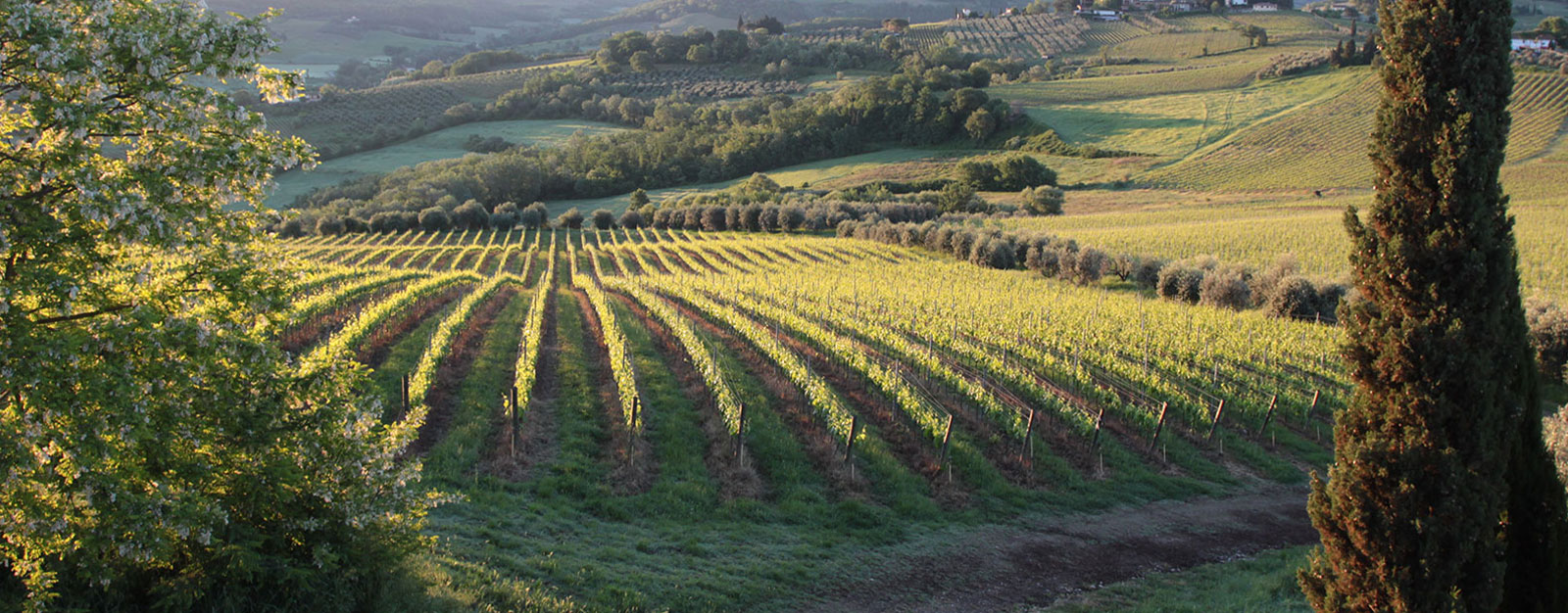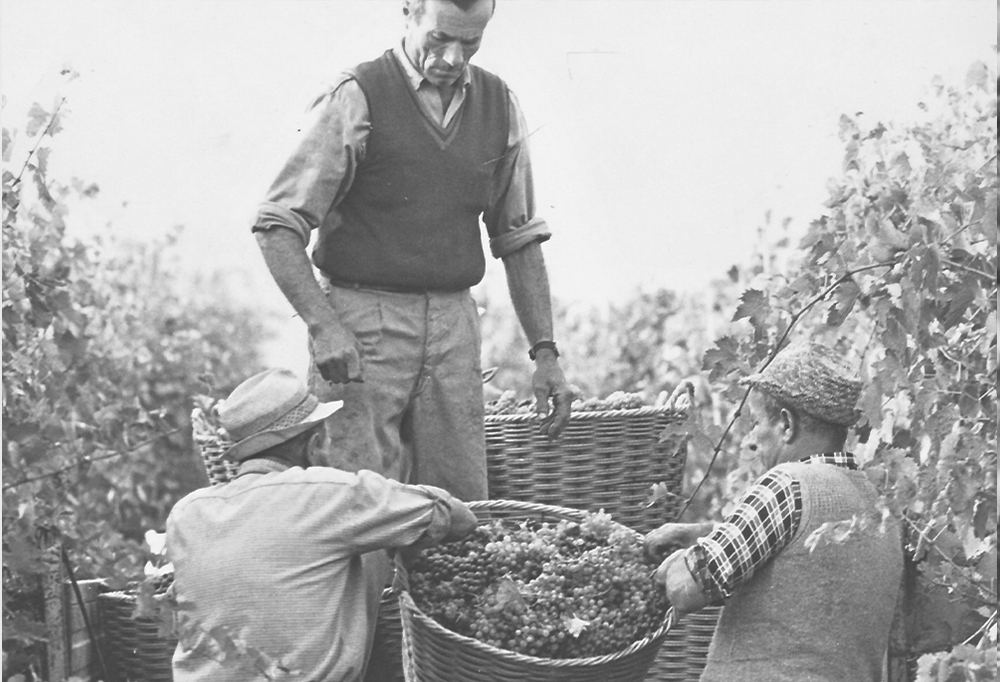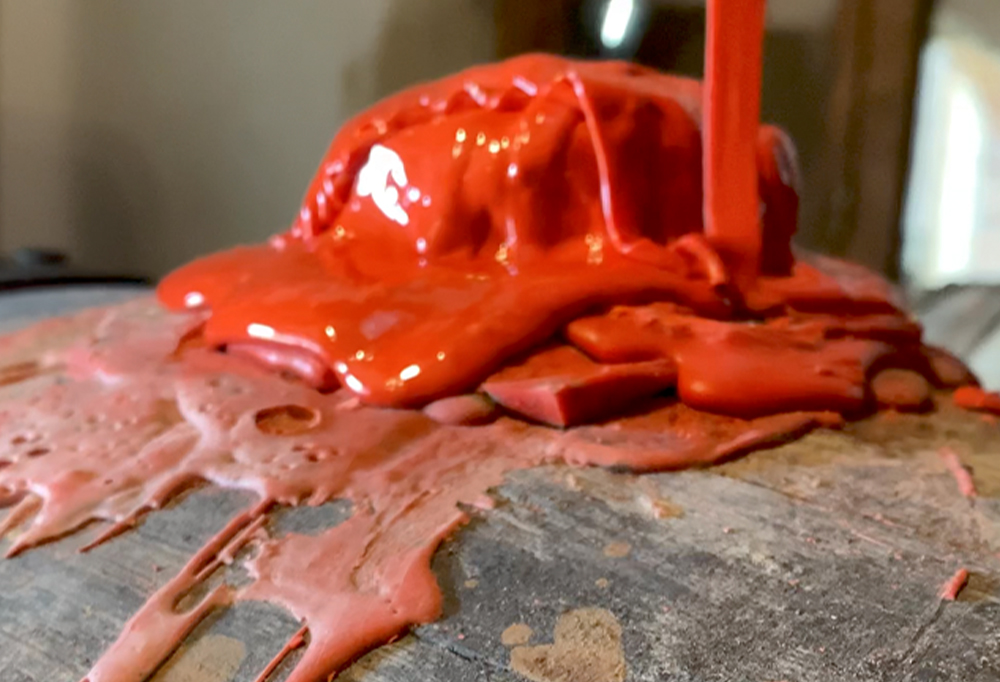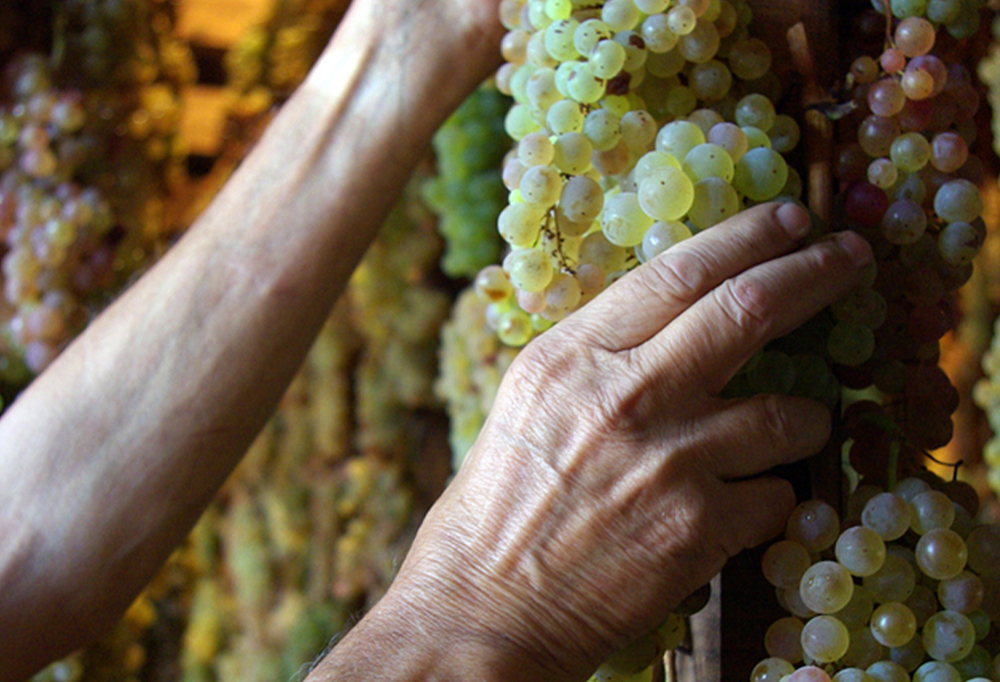Our Story
One family. 5 generations. A secular bond with these lands.
Our estates: Corfecciano – Urbana, Il Monte, Ribaldaccio.
Three locations each different in terms of altitude, exposure and soil, elements that allow the wines to express their nuances and distinctive traits.
Vinsanto
In September the Trebbiano grapes are meticulously harvested and selected by hand making the “penzolo” ( a section of the vine which has two bunches of grapes) and are then hung in the drying rack, a well-ventilated room naturally exposed to winds in order to guarantee a slow drying that fully respects the nature of this delicate process. At the end of January a soft pressing cycle is applied in order to respect the integrity of the bunches as much as possible. The must is then poured into the “caratelli”. Once they are sealed with sealing wax, a long and slow fermentation begins with an aging that can reach ten years.
Vinsanto
In September the Trebbiano grapes are meticulously harvested and selected by hand making the “penzolo” ( a section of the vine which has two bunches of grapes) and are then hung in the drying rack, a well-ventilated room naturally exposed to winds in order to guarantee a slow drying that fully respects the nature of this delicate process. At the end of January a soft pressing cycle is applied in order to respect the integrity of the bunches as much as possible. The must is then poured into the “caratelli”. Once they are sealed with sealing wax, a long and slow fermentation begins with an aging that can reach ten years.
Vinsanto
In September the Trebbiano grapes are meticulously harvested and selected by hand making the “penzolo” ( a section of the vine which has two bunches of grapes) and are then hung in the drying rack, a well-ventilated room naturally exposed to winds in order to guarantee a slow drying that fully respects the nature of this delicate process. At the end of January a soft pressing cycle is applied in order to respect the integrity of the bunches as much as possible. The must is then poured into the “caratelli”. Once they are sealed with sealing wax, a long and slow fermentation begins with an aging that can reach ten years.
Olive oil
Our link with Tuscany and the Montespertoli area also finds voice in the production of oil. We have thirty hectares of olive groves cultivated with Tuscan varieties, such as Moraiolo, Leccino and Frantoio. The olives are carefully harvested by hand and pressed immediately in our oil mill. The result is our Toscano IGP Colline di Firenze extravirgin olive oil, made by making a careful blend of these three varieties
Olive oil
Our link with Tuscany and the Montespertoli area also finds voice in the production of oil. We have thirty hectares of olive groves cultivated with Tuscan varieties, such as Moraiolo, Leccino and Frantoio. The olives are carefully harvested by hand and pressed immediately in our oil mill. The result is our Toscano IGP Colline di Firenze extravirgin olive oil, made by making a careful blend of these three varieties
Olive oil
Our link with Tuscany and the Montespertoli area also finds voice in the production of oil. We have thirty hectares of olive groves cultivated with Tuscan varieties, such as Moraiolo, Leccino and Frantoio. The olives are carefully harvested by hand and pressed immediately in our oil mill. The result is our Toscano IGP Colline di Firenze extravirgin olive oil, made by making a careful blend of these three varieties
Santa Lucia
The small chapel of Santa Lucia, still in use, is decorated with frescoes by Gregorio Pagani, a famous Florentine Mannerist painter of the sixteenth century, whose works are exhibited in the Uffizi and the Hermitage Museum in St. Petersburg.
Visit this little gem!
Santa Lucia
The small chapel of Santa Lucia, still in use, is decorated with frescoes by Gregorio Pagani, a famous Florentine Mannerist painter of the sixteenth century, whose works are exhibited in the Uffizi and the Hermitage Museum in St. Petersburg.
Visit this little gem!
Santa Lucia
The small chapel of Santa Lucia, still in use, is decorated with frescoes by Gregorio Pagani, a famous Florentine Mannerist painter of the sixteenth century, whose works are exhibited in the Uffizi and the Hermitage Museum in St. Petersburg.
Visit this little gem!

Fattorie Parri
Località Urbana – Via Vallone, 4
50025 Montespertoli – Firenze – Italia
Tel.: +39 0571 674057 Cell: +39 335 7768100
E-Mail: info@fattorieparri.it






















